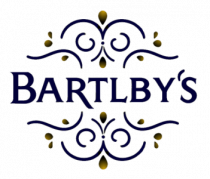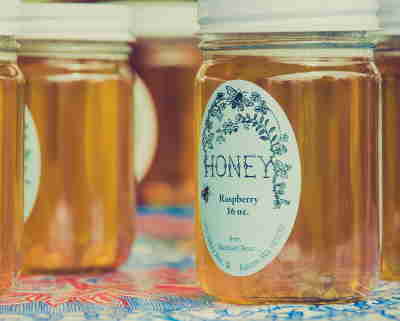
This seems like a very odd question, after all we’ve all had honey on toast and what’s that honey if not a surplus (conveniently available for us to harvest). When, 25 or so years ago, I kept a few hives over about three seasons that’s certainly what I believed. I think I also saw beekeeping as an inherently ‘green’ endeavour; I imagined my modest efforts were helping to conserve pollinators (and of course those efforts were rewarded with a crop of honey) and that without the interventions of beekeepers bees just wouldn’t survive.
If I look back at how I managed the colonies I had back then I can see I was following the conventional approach to keeping bees. I inspected the colony regularly, removed queen cells to inhibit swarming, added supers above a queen excluder to collect the honey I harvested. And because I’d taken the bee’s honey I fed them sugar to get them through the winter. I also treated them with miticides to control varroa (it had fairly recently arrived in the UK and my guess is that very few beekeepers were not treating at that time). This remains the conventional approach to beekeeping and the one that new beekeepers will probably be exposed to by their local beekeeping association. Now, 25 years, later I find myself questioning all these assumptions.
Feeding Bees
If bees produce surplus honey why is it necessary to feed them and if they weren’t fed how would that affect the honey crop? This seems like a very obvious question but one I’d never asked myself until now. But to answer the question we need to know both how much honeybees are fed and just how much honey they produce. According to the National Bee Unit an average colony of bees may require between 40lb and 50lb of stores to see it through a UK winter.1
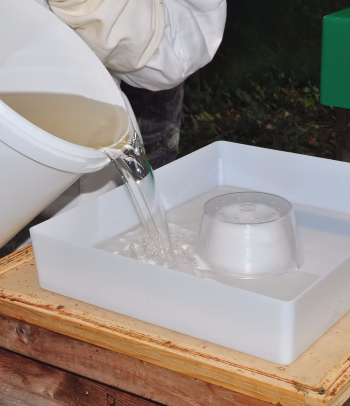
Some bee strains might require more and others less while climate and the harshness of the weather will also have an effect. Even if the beekeeper harvests all the honey stored above the queen excluder the bees will still store some honey in the brood boxes as the queen’s rate of laying slows through autumn. An assessment of these stores will guide how much feed is necessary. With all these variables its hard to say definitively how much food will be necessary.
My records say I was feeding between 20lb and 30lb of sugar per colony in the south of England and this tallies quite well with an estimate here of 20lb to 25lb of sugar per colony. These figures relate to overwintering bees and colonies may get more sugar at other times; if the weather is poor in the spring, after a split perhaps, or perhaps if there’s a dearth of nectar after the bees have been foraging a single source i.e. oilseed rape.
A slightly confounding factor is that the calorific content of sugar is 3.8Kcal per gram while that of honey is 3Kcal per gram suggesting that you’d need about 20% more stores if you let the bees winter on honey. So how might these figures compare to the amount of honey harvested.
The Size of the Honey Crop
Again this isn’t a straightforward question to answer. Back in the 1950s a harvest of 50lb to 100lb per hive was common.2 However the latest figures (2019) available from The British Bee-Keeping Association annual survey of its members honey harvest gives a figure of 40lb per hive. This figure was a 10 year high and 20lb to 25lb has been more common over those 10 years.3 I’ve seen these figures criticised in online forums as biased toward inexperienced hobbyist beekeepers where you’ll also see people saying they’ve had crops averaging 100lb per colony from their ‘production’ colonies.
That they specify ‘production’ colonies suggests they have other colonies – perhaps queen rearing, or perhaps they combine colonies just before moving them to a field of oilseed rape. It’s impossible to know but the average per ‘production’ colony might not be the same as the average per colony. Its also been suggested that from an average colony in an average location one might expect approximately 50lbs of honey.4 That’s in line with a National Bee Unit survey in 2022 which suggested an average yield of 25kg (2.2lbs per kg) with commercial bee farmers getting almost a third more (approx. 34kg).5
Interestingly the source for average of the 50lbs of honey from an average hive also mentions that their best ever crop was 160lbs from a colony feeding on a field of borage. The fact that commercial operations are more likely to be siting and/or moving their bees to the best forage they can might explain why they harvest more honey. What this suggests is that one of the key factors determining yields is the availability of forage.
Bee Forage
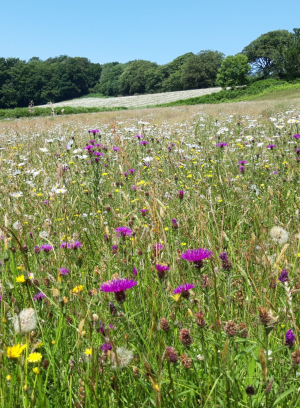
There’s no doubt that since the second world war bee forage in the UK has declined hugely, mostly driven by changes in agricultural practices. Its been shown that between 1930 and 1985 England and Wales lost 97% of their wildflower meadows and 40 years later the figure is probably worse.6 In the grasslands we do have its been shown that applying the UK average amount of fertiliser (100kg per hectare) cuts flower numbers by a fifth compared to unfertilised grassland.7
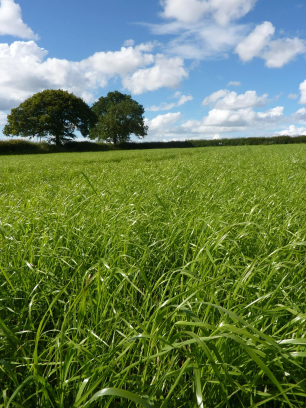
We’ve also lost 300,000 miles of hedgerow as field sizes have increased in response to the mechanisation which has driven much of the change in farming practices.8
Many of these changes can be tracked by analysing the pollen found in honey. This has been done, repeating a survey done in 1952. Back then white clover pollen was found in 93% of honey samples and was a major honey plant in 74% of samples. In 2017 it was found in 62% of samples but was a major honey plant in just 31%, suggesting that less white clover is now planted than was previously the case. Added to this is the fact that where white clover is planted its often as part of a grass lay that may be cut for silage two or three times in a season meaning that the clover never matures enough to flower.9 This is significant given that an acre of clover could yield as much as 160kg of honey per acre suggesting a well sited apiary may indeed harvest a significant honey crop.10 Of course how much honey was gathered per colony would depend on the number of colonies in the apiary and how big those colonies were. Those wishing to maximise their honey crop would want the smallest number of colonies that could fully exploit the available floral resource.
Colony Size and Stocking Density
Earlier I mentioned that when I first kept bees I’d pretty much bought into the idea that by keeping bees I was helping to conserve pollinators. It’s a nice idea and if one cares about such things it allows one to feel that you’re doing a good thing. It’s also an idea that doesn’t stand up to much scrutiny. If beekeepers are aiming to exploit as much of the available floral resource as they can that’s not going to be good for other species of pollinators who also rely on that resource. And honeybees, especially managed colonies, have a number of competitive advantages over other pollinators.
Honeybees are the only bee in the UK that overwinters as a colony of a queen and thousands of workers and this allows them to rapidly grow the colony in the spring. Compare this to a bumble bee overwintering as a single queen who must raise and feed her first offspring in the spring and whose colony is unlikely expand beyond a few hundred individuals. Spring feeding, of both sugar, pollen and nutritional supplements by beekeepers accentuates this competitive advantage and there’s good evidence that where they are densely stocked honeybees have an adverse impact on the success of other ‘wild’ pollinators. A 2017 literature review found a majority of studies showing honeybees having a negative impact on wild bees and outcompeting them in various ways.11
The size of managed honeybee colonies is a major factor driving this competition. In the wild honeybee colonies will chose to nest in tree cavities between 40 litres and 60 litres in size. A standard British National brood box and super is just under 60 litres and many managed colonies will have this below the queen excluder (i.e. just for brood rearing) with supers for storing honey on top.
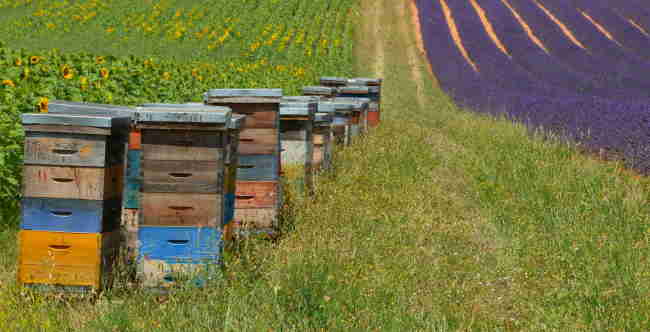
These larger colonies forage over a larger range than smaller feral colonies or solitary bees. Flying longer distances requires more nectar to power the flight meaning that for a given amount of honey stored a greater amount of nectar is required, putting additional pressure on floral resources. Honeybees are able to travel longer distances due to their ability to communicate with each other the location of floral resources an adaptation not available to other pollinators.12 All these competitive advantages of honeybees are accentuated in an environment in which forage has declined markedly and it appears that honeybees managed for honey production have an adverse effect on other pollinators.
As an aside the bee researcher Tom Seeley has suggested that the size of colonies and the density of stocking may be a major factor in the spread of pests and disease in bees. Varroa in particular seems to be well controlled in small colonies that are free to swarm and which are stocked at very low densities.13
A Little History
The number of managed honeybee colonies has declined significantly since the second world war, the same period which has seen a decline pollinator numbers more generally.14 So its probably unfair to place all the blame with the honeybee; changes in agricultural practice is undoubtedly the major factor. But just like other agricultural practices apiculture has changed significantly over the years; most notably with the introduction of the moveable frame hive in the mid 19th century. Prior to this most bees in the UK were kept in straw skeps and had been for centuries.
With the advent of moveable frame hives the management of bees increasingly focussed on the prevention of swarming in order to create large colonies and maximise the honey production of each hive. This is the exact opposite of how bees in skeps are managed where swarming is actually encouraged.15 However this doesn’t mean that skep beekeeping isn’t productive.
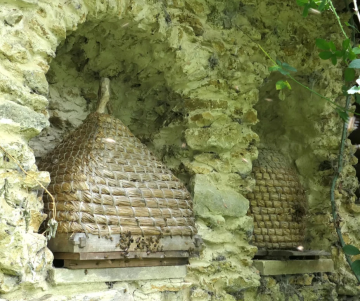
Records from the 13th century show that Crondal Manor in Hampshire sold almost 250 gallons of honey in a single year, while Beaulieu Abbey (also in Hampshire) sold half a tonne. Other records show that the household of the Earl of Lancaster buying over 3000lb of wax in a single year for both lighting and seals.16 In fact at that time wax was at least as important a crop as honey. This may have led to the common practice of drowning skeps to kill the bees so that honey & comb could be harvested. There are ways to harvest honey and wax from skeps that don’t involve killing bees and from at least the Tudor period beekeepers were using small skeps on top of larger ones – essentially adding a super to harvest honey. However this harvest couldn’t be large because the bees would overwinter on their own honey stores.
In the 13th century a lb of honey was worth about a half penny, while a lb of beeswax might fetch 5 to 6 pence. At the same time a lb of sugar might cost 20 to 25 pence. In fact the price of honey and sugar in England didn’t equalise until the mid 18th century and sugar wasn’t cheap enough to make feeding it to bees feasible until the second half of the 19th century, around the time that moveable frame hives appeared. The possibility of feeding bees sugar and moveable frame hives radically transformed beekeeping and represent a break with practices that had been relatively stable for centuries before that.
Conclusions?
So have I answered my original question? Do bees produce a surplus of honey? Well at this point I would suggest that sometimes the answer is yes but that many beekeepers seem to be simply swapping one form of sugar (honey) for another (sugar syrup) without a great deal of increase. For those that do better than that it might be that given the reduction of bee forage in much of the UK that surplus comes at the expense of other, wild, pollinators. But if we look back 50 years or more there are many beekeepers reporting much larger honey crops and at the time there was no apparent decline in wild pollinator numbers suggesting that bees are certainly capable of producing large surpluses of honey without adversely affecting other insect populations.
However the more I’ve thought about this the more it seems that there is no obvious evolutionary reason why bees would produce honey surplus to their needs. Conventional beekeeping practice aims to produce these surpluses through careful management; swarm control and large brood chambers spring to mind. These practices may actually be pushing bees into ways of living and working at odds with those they’ve evolved for themselves over millions of years and which may not be in the bees’ best interests over both the short and long term. And there is a good evolutionary reason for bees to produce a surplus of bees, i.e. to swarm, with the fittest of those colonies surviving. Older beekeeping practices seem more in line with this evolutionary imperative; smaller colonies with swarming as part of the management of the bees. But regardless of how we manage our bees the biggest factor affecting honey harvests is probably the availability of bee forage and unfortunately this is something over which few beekeepers have a great deal of control.
- https://www.nationalbeeunit.com/assets/PDFs/3_Resources_for_beekeepers/articles_reports/BBKA_news/BBKA_18_Feeding_Bees_-_August_2012_p7_to_8.pdf ↩︎
- https://www.bbka.org.uk/news/depressingly-small-honey-crop-from-british-beekeepers?srsltid=AfmBOooF7J9ryHVpmURu31gzFTJtnJL6on73Sr_0jQdOoVDIkJDR566x ↩︎
- https://www.bbka.org.uk/news/more-than-40-of-beekeepers-say-they-had-a-better-honey-harvest-in-2019?srsltid=AfmBOopEwFC54AYTexKxODenDjyiXzEdD2vFeWKkQ8mT2j83b90iJtFH ↩︎
- https://www.cotswoldbees.co.uk/how-much-honey-will-i-get-from-my-hive/ ↩︎
- https://www.nationalbeeunit.com/assets/PDFs/6_Bees_and_the_Law/UK_apiculture/Apiculture-Programme-England-23-25-AC.pdf ↩︎
- https://carmarthenshiremeadows.com/2021/04/07/meadows-98-gone-really/ ↩︎
- https://www.theguardian.com/environment/2025/jan/20/uk-agriculture-farming-fertilisers-yields-biodiversity-study-park-grass-pollinators-bees-wildflowers-aoe ↩︎
- https://heartofenglandforest.org/news/lifeline-nature-valuing-forests-hedgerows . ↩︎
- https://botanicgarden.wales/press/honeybee-historians-honeybees-reveal-how-our-floral-landscape-has-changed-over-the-last-65-years/ ↩︎
- https://www.evacranetrust.org/uploads/document/80cf8481fe73c466d2e4e75621cbae4d9b09ba38.pdf ↩︎
- https://journals.plos.org/plosone/article?id=10.1371/journal.pone.0189268 ↩︎
- https://www.sciencedirect.com/science/article/pii/S0960982222017122 ↩︎
- https://www.youtube.com/watch?v=i8dNYnzvhLM ↩︎
- https://jeffollerton.co.uk/2019/11/14/historical-changes-in-honey-bee-numbers-in-britain-how-much-do-we-know/ ↩︎
- http://beespoke.info/2015/11/12/skep-beekeeping/ ↩︎
- https://www.evacranetrust.org/uploads/document/bfb6d0115e227b9d52d123704c34c86c32b3118c.pdf ↩︎
